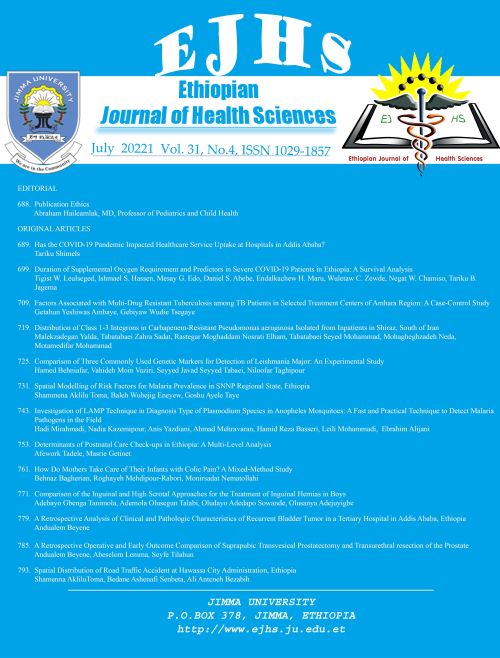Main Article Content
Duration of Supplemental Oxygen Requirement and Predictors in Severe COVID-19 Patients in Ethiopia: A Survival Analysis
Abstract
BACKGROUND፡ With the rising number of new cases of COVID-19, understanding the oxygen requirement of severe patients assists in identifying at risk groups and in making an informed decision on building hospitals capacity in terms of oxygen facility arrangement. Therefore, the study aimed to estimate time to getting off supplemental oxygen therapy and identify predictors among COVID-19 patients admitted to Millennium COVID-19 Care Center in Ethiopia.
METHODS: A prospective observational study was conducted among 244 consecutively admitted COVID-19 patients from July to September, 2020. Kaplan Meier plots, median survival times and Log-rank test were used to describe the data and compare survival distribution between groups. Cox proportional hazard survival model was used to identify determinants of time to getting off supplemental oxygen therapy, where hazard ratio (HR), Pvalue and 95%CI for HR were used for testing significance and interpretation of results.
RESULTS: Median time to getting off supplemental oxygen therapy among the studied population was 6 days (IQR,4.3-20.0). Factors that affect time to getting off supplemental oxygen therapy were age group (AHR=0.52,95%CI=0.32,0.84, pvalue=0.008 for ≥70 years) and shortness of breath (AHR=0.71,95%CI=0.52,0.96, p-value=0.026).
CONCLUSION: Average duration of supplemental oxygen therapy requirement among COVID-19 patients was 6 days and being 70 years and older and having shortness of breath were found to be associated with prolonged duration of supplemental oxygen therapy requirement. This result can be used as a guide in planning institutional resource allocation and patient management to provide a well-equipped care to prevent complications and death from the disease.






